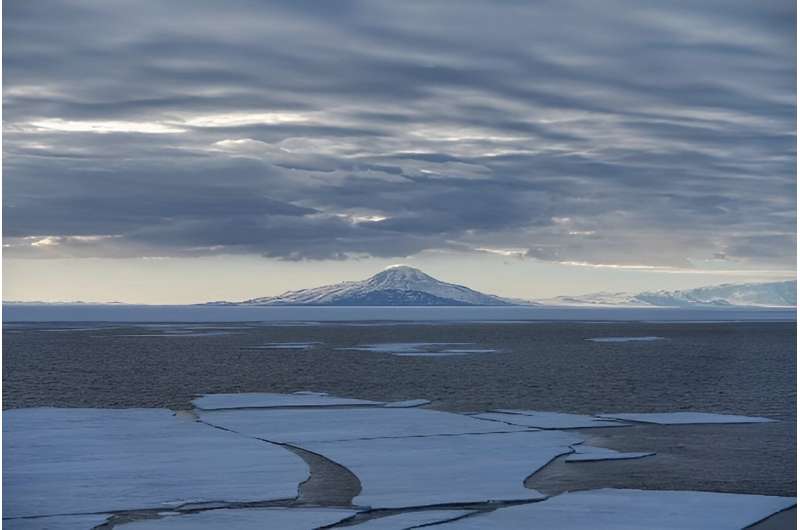This article has been reviewed according to Science X's editorial process and policies. Editors have highlighted the following attributes while ensuring the content's credibility:
fact-checked
trusted source
proofread
Deep learning forecasts Antarctic sea ice trends for 2024—projected to remain close to historical lows

The year 2023 stands out as the warmest year on record globally, accompanied by the highest recorded ocean temperatures. Amidst these extreme and unusual climatic conditions, Antarctic sea ice extent (SIE), after breaking the second consecutive satellite-recorded low in February 2023, failed to recover at an average rate in the autumn and winter months.
Instead, sea ice coverage has persistently set new monthly record lows for six consecutive months starting from May. On July 6, 2023, the Antarctic SIE anomaly reached an unprecedented -2.809 million square kilometers, nearly equivalent to the entire land area of Argentina.
The sustained breaking of historical lows in Antarctic sea ice has prompted international concern and scrutiny regarding the upcoming summer SIE in 2024. In November 2023, a research team based at Sun Yat-sen University and Southern Marine Science and Engineering Guangdong Laboratory (Zhuhai) initiated an assessment of the possibility of new record lows in February 2024, following the "least sea ice year."
To address this question, they employed a Convolutional Long Short-Term Memory (ConvLSTM) neural network to construct a seasonal-scale Antarctic sea ice prediction model. Utilizing deep learning methods, the team conducted predictive research on Antarctic summer sea ice for the 2023/24 season.
Their latest study, published in the journal Advances in Atmospheric Sciences, demonstrates the model's success in capturing interannual and interseasonal variability in SIE over an eight-year reforecast experiment.
The model also accurately reproduced three historical summer lows in 2017, 2022, and 2023, with errors smaller than those in the European Centre for Medium-Range Weather Forecasts (ECMWF) predictions.
What lies ahead for Antarctic sea ice in 2024? The deep learning model's predictions from December 2023 to June 2024 indicate that Antarctic sea ice will remain near historical lows. However, it is highly unlikely to set a new record low in February 2024. The predicted SIE for February 2024 is expected to be 2.105±0.453 million square kilometers, slightly higher than the historic low in 2023.
According to the latest satellite observations, the SIE in December 2023 and January 2024 fell within the range of one standard deviation of the predicted value. Especially, the predicted SIE in January 2024 differs from the observed value by only 0.0015 million square kilometers, indicating the reliability of the prediction.
The results have been submitted to the SIPN-South international call for the 2023/24 season, making it one of the 15 participating contributions. The study underscores the significant promise of deep learning methods in Antarctic sea ice prediction.
More information: Xiaoran Dong et al, Deep Learning Shows Promise for Seasonal Prediction of Antarctic Sea Ice in a Rapid Decline Scenario, Advances in Atmospheric Sciences (2024). DOI: 10.1007/s00376-024-3380-y
Provided by Chinese Academy of Sciences





















